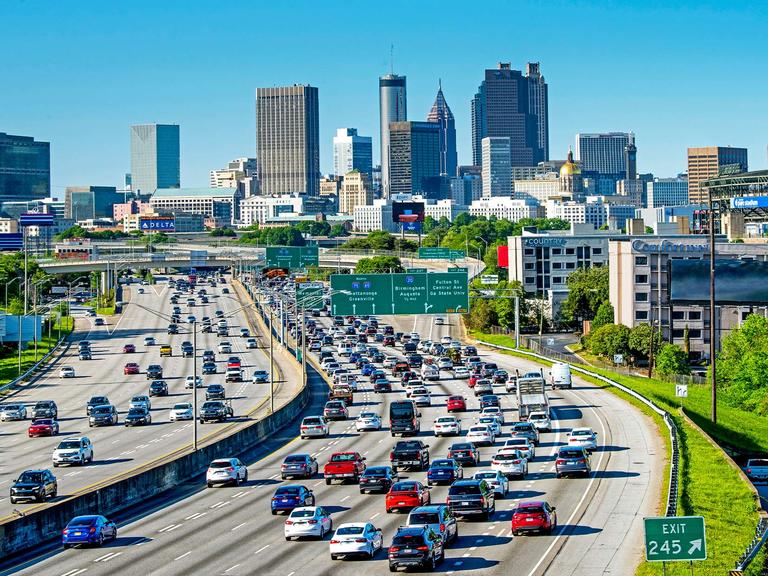All eyes on ISA: what is the difference between active and passive speed limiters?

Cars can now tell you when you’re speeding or even slow down themselves. But is that what drivers really want?
Intelligent Speed Assistance (ISA) systems are becoming essential for vehicle and road safety globally. ISA deploys both active and passive speed limiters to cap a vehicle’s maximum speed, enhancing road safety, improving fuel efficiency and reducing emissions.
But what makes them different?

Activating safety
Active speed limiters automatically adjust a vehicle's speed in real-time to match required limits using sensors and location data. When the system detects that the vehicle is approaching or exceeding a required speed limit, it automatically takes action to slow the vehicle down. This intervention can involve adjusting the throttle, applying brakes - or combining both.
Active speed limiters provide a continuous and automatic way to control speed, reducing the likelihood of human error. They are especially effective in urban areas where speed limits can change frequently, helping drivers comply with local traffic laws and improving overall road safety.
Despite their advantages, active speed limiters can feel intrusive to some drivers. The automatic nature of these systems means that drivers have less control over how fast they are moving, which can be frustrating in certain driving conditions. The need for constant data updates and sensor maintenance can also add to the overall cost of these systems.
HERE ISA Map |
| Precision is at the heart of Intelligent Speed Assistance. With HERE ISA Map, car makers have access to 100% speed limit coverage across all roads in more than 180 countries, allowing them to comply with ISA regulations. |
| HERE ISA Map captures high-quality map data and combines that with inputs from vehicle camera sensors and local government data for reliable, accurate coverage and ISA compliance. It means car makers can overcome the limitations of relying solely on camera-based systems, which can be fallible due to factors such as weather and obstacles obscuring signage. |
No need for speed
Unlike their active counterparts, passive speed limiters work by alerting the driver when they approach or exceed a preset limit. They do not automatically control the vehicle's speed but use visual cues on the dashboard, auditory warnings or haptic feedback (such as steering wheel vibrations) to inform the driver that the car is going too fast.
This type of speed limiter also offers more flexibility, allowing drivers to maintain control over how fast they want to go. Most beneficial in scenarios where driver awareness and responsibility are key, passive speed limiters are easier to implement and generally less expensive than active systems.
The main drawback of passive speed limiters is their reliance on the driver's reaction. If a driver is distracted or chooses to ignore the alerts, the system fails to provide the intended safety benefits. This makes them less reliable in maintaining consistent speed control.

Diversifying deceleration
The most significant difference between active and passive speed limiters is the level of control they offer. Active speed limiters take control when necessary, reducing the reliance on the driver's judgment and reaction time. This can be particularly helpful in scenarios where quick adjustments are crucial.
By automatically adjusting the vehicle's speed, these systems reduce the likelihood of speeding incidents and associated penalties. They also contribute to safer driving conditions by minimizing instances of excessive speed.
Passive speed limiters are more suited for environments where drivers prefer to retain full vehicle control and use the system merely as a guide. They focus on encouraging safe driving habits rather than enforcing them by providing the necessary alerts and information without compromising the driver's autonomy.

Best time to slow down
Active speed limiters are ideal for high-risk areas where strict adherence to speed limits is critical, such as school zones and residential neighborhoods. In high-traffic urban settings, they are often the preferred choice due to their automatic adjustments and use of real-time data. Passive speed limiters are well-suited for situations where drivers prefer to remain in full control such as rural or less congested areas where speed limits are less critical.
And to make driving even safer, both systems can be integrated with advanced features such as drowsiness detection to ensure that drivers remain alert and focused.
Slowing the pace
Understanding the differences between active and passive speed limiters is crucial for the advancement of road safety. Choosing the right type of speed limiter and leveraging location technology and real-time data can make driving safer, more efficient and fully compliant with traffic regulations.
Have your say
Sign up for our newsletter
Why sign up:
- Latest offers and discounts
- Tailored content delivered weekly
- Exclusive events
- One click to unsubscribe


